Join us for our performance car air filter test, as we test six aftermarket cone filters to see which flows the best!
Fitting a performance air filter is usually one of the first upgrades you will make in the search for increased power. As the filter is the first part of the inlet system, the amount of air it allows to enter the engine has a direct correlation with how much horsepower the engine can potentially produce. Fitting a less restrictive air filter will allow more air in, therefore giving potential for increased power. Picking the right air filter can be tough, so we’ve put together a handy guide to the best car air filter in 2023.
An air filter’s primary function is to prevent dirt and debris from getting into the inlet system and causing any damage. In terms of restriction, running no air filter is always going to be the least restrictive option, but this will allow damaging dirt and debris in, too, significantly reducing the engine’s life.
For this reason, a good performance air filter needs to find that perfect compromise of balancing filtration against airflow. One thing is certain, though – not all air filters are the same, so we decided to compare a few.
Performance Car Air Filter Test
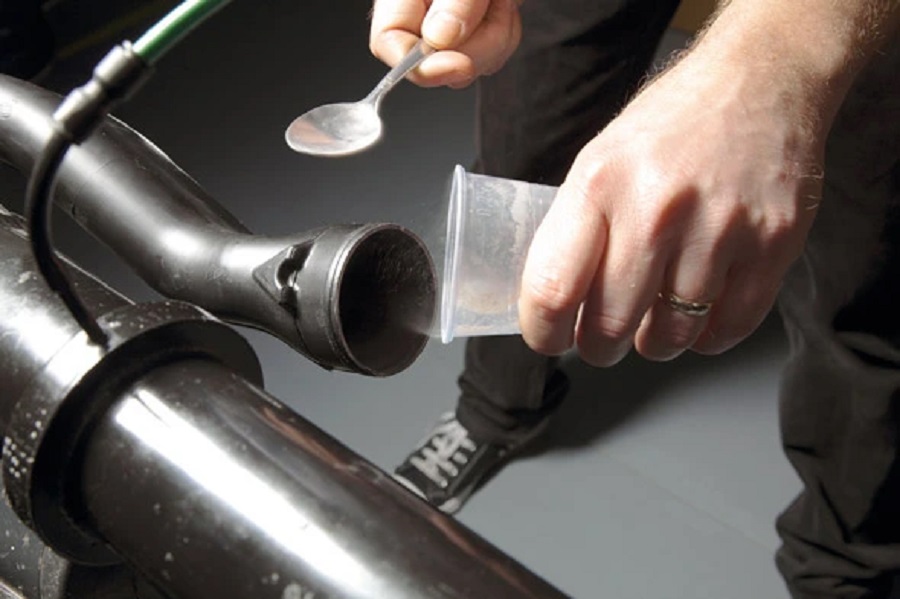
The Test
The restriction test we came up with was quite straightforward. Before we began, we tested the rig and measured the pressure losses created by the rig itself. We could then compare the data acquired when we tested the filters to get a more accurate performance figure.
To test the filters, we fitted them to the rig and increased the flow rate at measured increments. At each of these, we recorded the pressure increase and plotted these points on a graph to give a visual representation of how the restriction of the filter increases with airflow, therefore allowing a direct comparison between filters.
The best filters are the ones that had the highest flow and the least restriction, but we also took filtration into account, as while all filters give good filtration, it is widely accepted that cotton gauze filters filter dirt the best, followed by foam filters, and finally metal filters.
The Test Venue
We really needed this test to be as scientific as possible, which meant eliminating as many variables as we could. Using J1 Automotive’s specific air filter testing rig allowed us to do just that. The rig meant we could accurately control the airflow in m3/min (cubic metres per minute) and accurately read a pressure increase just after the filter in kPa (kilopascals), to give an accurate representation of the restriction. Basically, the higher the pressure here, the more restrictive the filter is.
The tester was J1 Automotive’s Tony Cotton, who started the company in 2006 after an engineering career with Mahle developing intake systems. Since then, he’s developed many aftermarket performance intake kits and specializes in bespoke systems for clients such as BMW Mini and Aston Martin.
The Filters
We asked six of the leading names in the industry to supply a cone filter they recommend for our chosen car, a Mk5 Fiesta ST. K&N, ITG, Green Cotton, Powertec, Pipercross and Jetex all agreed and sent in filters for testing. Read on to see the results…
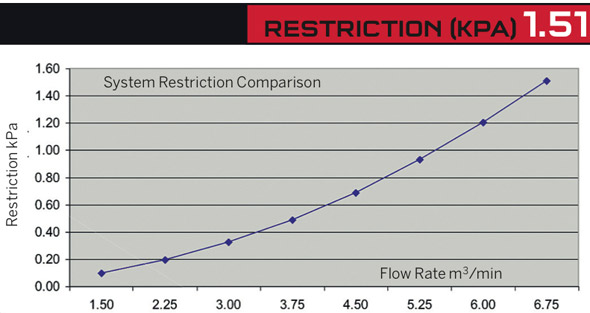
K&N Air Filter Test
K&N is a brand we’ve all heard of when it comes to performance filters, and being part of the Mountune Performance ST165 and ST185 packages for the car we chose, the Fiesta ST, we were expecting good things from the K&N. It clearly flowed much better than the original airbox setup (see later in the feature for panel filter testing), and the cotton gauze design is very effective at filtering out dirt, but the supplied 57i kit was the smallest of all the the cone filters tested. This could have been a contributing factor as to why the K&N produced the highest kPa increase (restriction) seen from any of the cone filters we tested.
Restriction (KPA) 1.51
Contact: K&N Air Filters
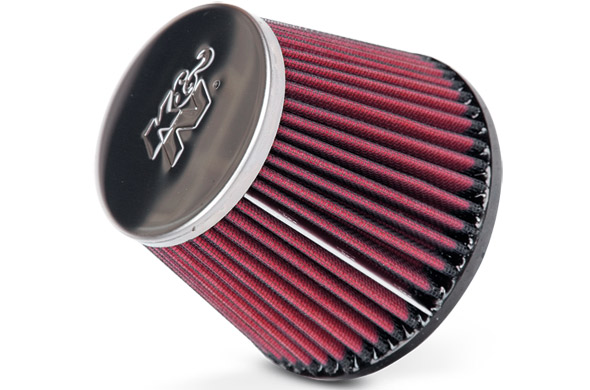
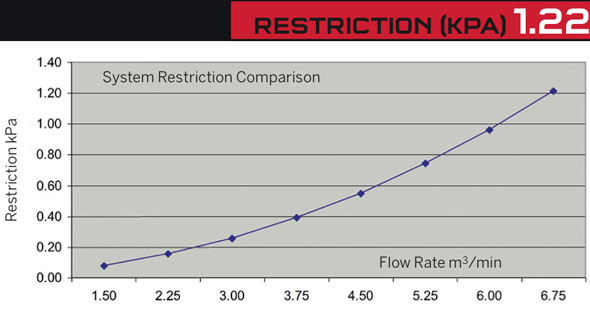
ITG Performance Car Air Filter Test
The ITG filter was one of the largest of the cone filters we tested, and that, combined with the free-flowing foam design, meant it wasn’t a huge surprise when it did well. The 1.22kPa increase we saw at 6.75m3/min was about the average from all the filters tested, so it’s clearly doing its job very well. The size of this unit demonstrates a very important point in the world of performance filters, and that is that you can never go too big. Bigger means more airflow for a given amount of filtration, and, most improtantly for a tuned car, it means potential for tuning your engine further in future without needing to fit an even larger air filter to cope.
Restriction (KPA) 1.22
Contact: ITG Air Filters
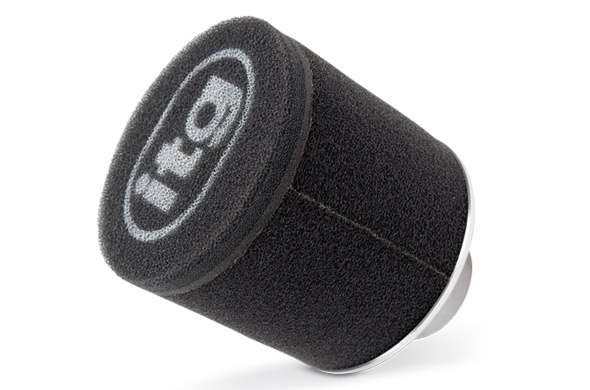
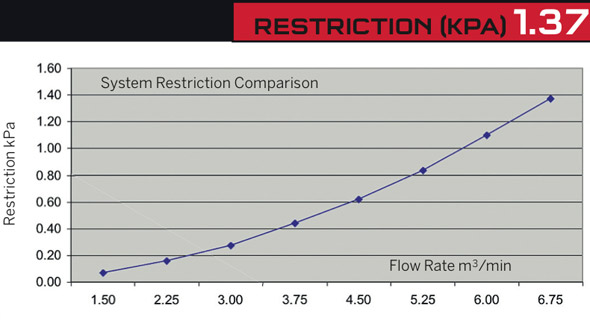
Green Cotton Air Filter Test
The Green Cotton filter is, as the name suggests, made from cotton gauze like the K&N and Jetex items. We were therefore expecting similar results as the medium used is also similar. In fact the Green Cotton outperformed the K&N, with a maximum pressure increase of 0.15kPa less than that of the K&N, and this seems to be due to its slightly larger size. The Green was also the only filter to feature the conical end designed to increase surface area, which may have contributed to its good airflow performance. In terms of filtration a cotton gauze filter is ideal to use even in very dusty conditions, but as the tests show, is more restrictive than foam.
Restriction (KPA) 1.37
Contact: Green Cotton Air Filters
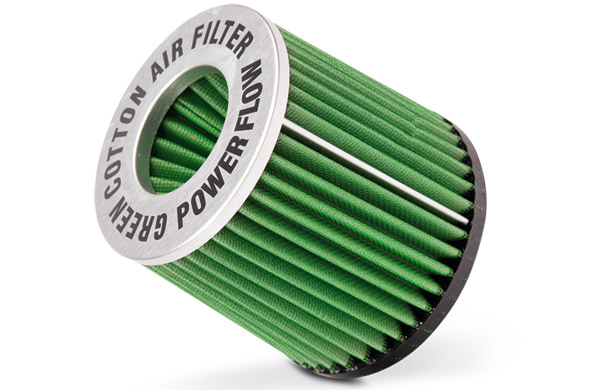
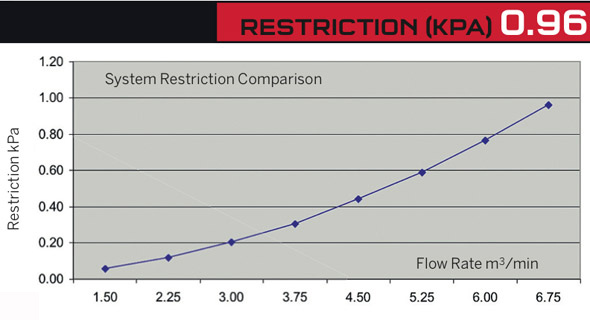
Powertec Air Filter Test
The Powertec item was the only stainless-steel mesh filter on test, and was generally considered to be the best-looking filter out of those tested, too. It was the best performer in this test by quite a margin in terms of airflow, with a maximum kPa increase of just 0.96kPa. In terms of airflow, the Powertec clearly offers the least restriction from all those on test.
The only issue you may have is filtration, as it is generally accepted that steel mesh cannot catch the incredibly fine particles that cotton gauze and, to a lesser extent, foam filters can, but it’s debatable whether particles that small do any real damage, especally if you don’t do high mileage.
Restriction (KPA) 0.96
Contact: Powertec Air Filters
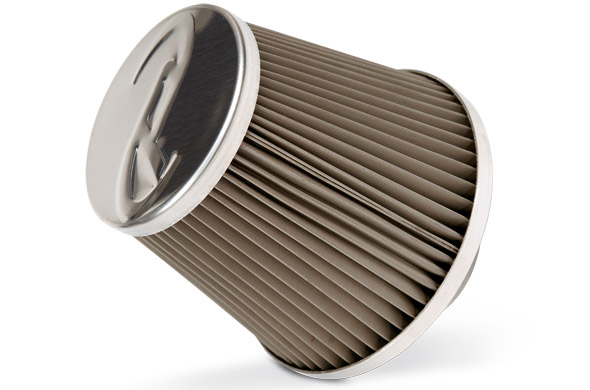
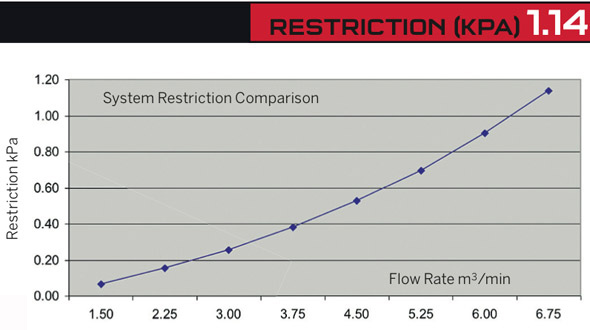
Pipercross Performance Car Air Filter Test
The Pipercross is made from a foam medium very similar to that used to make the impressive-looking ITG filter, we were expecting the Pipercross item to behave in a similar fashion to the ITG. In fact, it was actually slightly less restrictive than the ITG item, with a maximum pressure increase of 1.14kPa. It was very similar to the Jetex cotton filter, with only marginal differences between the two. Although it wasn’t as good-looking as the ITG unit, overall it was slightly larger, which is most likely the reason for its slightly better airflow. From a filtration point of view the foam filters have a very similar efficiency level.
Restriction (KPA) 1.14
Contact: Pipercross Air Filters
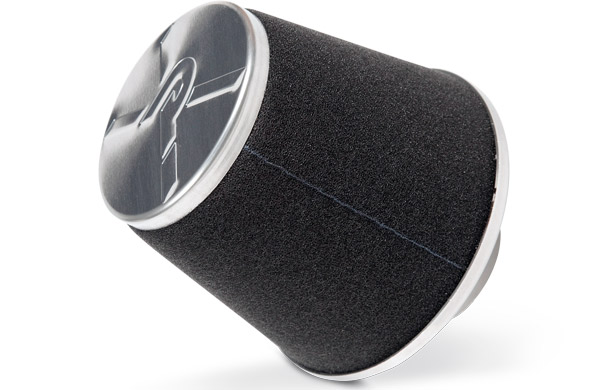
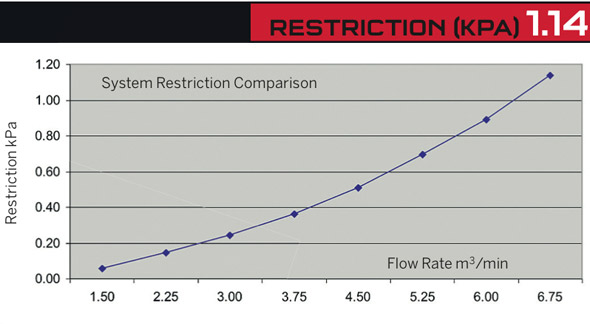
Jetex Performance Car Air Filter Test
Jetex may be best known for their exhaust systems and custom exhaust parts, but they also had the best-performing cotton filter in this test by quite a margin, and the second-best flowing filter overall, behind the stainless-steel mesh Powertec unit. The results are more or less identical to those of the Pipercross foam filter, with a maximum pressure increase of 0.23kPa less than the Green Cotton filter, and 0.37kPa less than the K&N filter. Considering the cotton gauze design should be one of the best at filtering dirt, this was a very impressive result, and it also proved that a good-sized filter is invaluable when going for maximum performance.
Restriction (KPA) 1.14
Contact: Jetex Air Filters
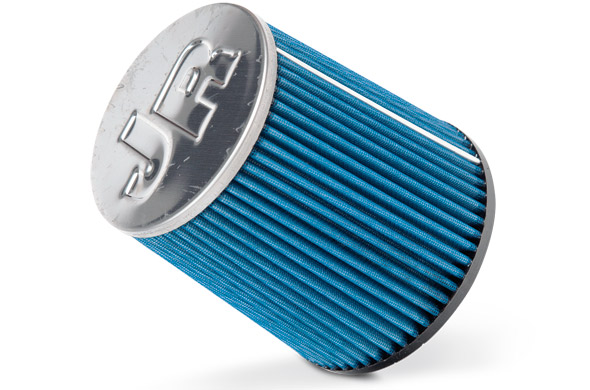
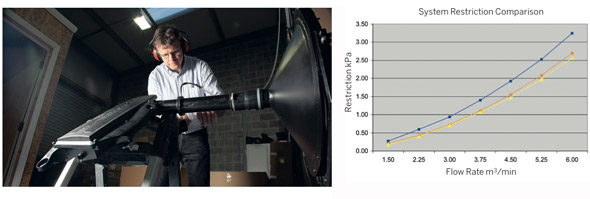
Performance Car Panel Air Filter Restriction Test
As not everyone wants to remove their standard airbox, we also restriction-tested a few standard panel filters in exactly the same manner as we did for the cone filters. We fixed the entire airbox assembly to the end of the rig, and increased the flow rate incrementally and recorded the pressure increase to see which offers least restriction.
The Results
The first thing to note was just how restrictive the standard assembly really is, so much so that even with the rig running flat-out we couldn’t achieve the 6.75m3/min flow rate we used when testing all the cone filters. That wasn’t a major concern, however, as Tony had calculated that a standard Ford Fiesta ST only requires a maximum of 5.5m3/min, and as we would use the same flow rate for all three tests, we could still make a direct comparison.
It was also worth noting the most restrictive cone filter we tested had a pressure of 1.21kPa at 6.0m3/min, whereas the best flowing filter within the standard airbox was 2.56kPa.
Overall, we have to conclude that if you want maximum performance from your engine, a large cone filter is definitely the way to go over a standard airbox.
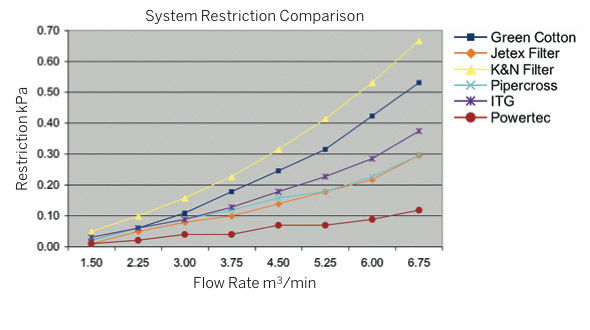 Performance Car Air Filter Test Conclusion
Performance Car Air Filter Test Conclusion
With all the results in on our performance car air filter test, and the calculator having worked overtime, we can sit back and work out what it all means. The first thing to note is just how incredibly restrictive the standard airbox setup is. The engine is effectively being strangled with the standard airbox fitted, therefore the best thing you can do to a Fiesta ST, and indeed many other cars, is get rid of it and fit a less restrictive cone filter. It is also worth noting that the price difference between a performance panel filter and the standard item is so small that it really isn’t worth keeping the standard filter at all.
Cone Filters
As for cone filters, we’ve already established that all the cone filters are much less restrictive than the original airbox, but there was quite a big difference between the performance of the cone filters on test, too. Firstly it was a bit of a surprise to learn that the K&N was the most restrictive, especially as it is the filter of choice for many tuners, but this was most likely due to its small size rather than anything else.
The Jetex made a big impression by being the best cotton filter on test, beating both the Green Cotton and K&N items. The two foam filters both performed well, with the Pipercross marginally outperforming the ITG.
The Powertec was the only stainless-steel mesh filter on test and it clearly offers the least restriction, as you can see from the graph. There was actually a 0.55kPa difference between the Powertec and the K&N.
Filtration
In terms of filtration, the standard paper item is always the best because of the stringent standards OEM products have to meet. We put this to the test after the flow tests and it had an incredible 99.75 percent efficiency, but as you will have read, it is very restrictive indeed.
In comparison to the paper filter, the two performance panel filters we tested were not as efficient as paper, with 77 percent for the ITG for example, but they would still be adequate in most conditions.
There are a few lessons that can be learnt from this test. The main one being that on most cars you should bin the standard airbox if you plan to increase the power. There also seems to be a direct link between efficiency and restriction – the less restrictive a filter is, the less efficient it is. Therefore, we can surmise that the cotton filters will have better efficiency percentages than the foam ones, but by the same token they are more restrictive in terms of airflow. Applying the same logic, we can deduce that the stainless- steel mesh filter isn’t likely to have a high efficiency percentage.
Therefore, you need to decide which medium is best for you, as there are pros and cons to each. Generally, it’s a compromise between power potential and engine protection, but if space isn’t an issue, then the larger the filter, the more even a restrictive filter medium can flow.
The post Performance Car Air Filter Test appeared first on Fast Car.
Leia Mais.